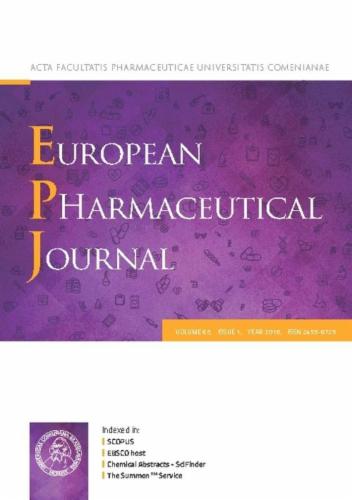The impact of community pharmacies on equity in access to professional rapid antigen testing for SARS-CoV-2 in Portugal
IF 4.3
3区 医学
Q1 PHARMACOLOGY & PHARMACY
引用次数: 0
Abstract
Introduction
Amid the COVID-19 pandemic, various public health measures were adopted to reduce the transmission risk, including the full reimbursement of SARS-CoV-2 professional rapid antigen detection tests (Ag-RDT) conducted in clinical pathology laboratories, community pharmacies (CPs), and other authorized entities. This study aimed to assess the impact of integrating CPs into the Portuguese National Health Service (NHS) testing strategy on the capacity of professional Ag-RDT delivery, and to compare the equity in testing access with and without CPs participation.
Methods
This analytical cross-sectional study assessed the impact of adding CPs into the testing strategy based on two main outcomes by municipality: (i) average distance (in Kilometres) of the population to the nearest Ag-RDT site; and (ii) the average number of weekly hours available to testing per 1,000 inhabitants, as of January 31, 2022. Two scenarios were considered: with and without CPs. Access inequalities were evaluated using Lorenz curves and Gini coefficients. A subgroup inequality analysis was conducted based on three socio-demographic indicators: population density, aging index, and per capita purchasing power index.
Results
A total of 1,369 (65.1 %) pharmacies and 735 (34.9 %) laboratories and other entities provided free Ag-RDT to the population. The average distance to the nearest Ag-RDT location was 3.7 km, which decreased to 1.8 km with the inclusion of CPs. Overall, there were 11.5 weekly hours per 1,000 inhabitants available for testing with CPs, compared to 2.1 h without CPs (p < 0.0001). The Gini coefficient for distance distribution decreased from 0.50 to 0.42 with CPs inclusion (-16.8 %). For the distribution of weekly hours, the Gini coefficient decreased from 0.42 to 0.26 (-38.6 %). The reduction was higher in municipalities with lower population density (-43.3 %), higher aging index (-51.3 %), and lower per capita purchasing power index (-54.6 %).
Conclusions
Pharmacies play a crucial role in mitigating geographical and socioeconomic inequalities in healthcare access. Without CPs, the provision of Ag-RDT services would result in significant territorial gaps, exacerbating disparities among already vulnerable population groups.

葡萄牙社区药房对公平获得专业SARS-CoV-2快速抗原检测的影响
在2019冠状病毒病大流行期间,采取了各种公共卫生措施来降低传播风险,包括在临床病理实验室、社区药房和其他授权实体进行的SARS-CoV-2专业快速抗原检测(ags - rdt)全额报销。本研究旨在评估将CPs纳入葡萄牙国家卫生服务(NHS)测试策略对专业Ag-RDT交付能力的影响,并比较有和没有CPs参与的测试机会的公平性。方法:本分析性横断面研究评估了将CPs加入检测策略的影响,该影响基于市政当局的两个主要结果:(i)人口到最近的Ag-RDT站点的平均距离(以公里为单位);(ii)截至2022年1月31日,每1000名居民每周可进行测试的平均小时数。考虑了两种情况:有和没有cp。使用洛伦兹曲线和基尼系数评估访问不平等。基于人口密度、老龄化指数和人均购买力指数三个社会人口指标,进行了亚组不平等分析。结果:共有1369家(65.1%)药店和735家(34.9%)实验室及其他单位向人群免费提供Ag-RDT。到最近的Ag-RDT位置的平均距离为3.7 km,随着cp的加入,平均距离减少到1.8 km。总体而言,每1000名居民每周有11.5小时可用于CPs测试,而没有CPs的为2.1小时(结论:药房在缓解医疗保健获取方面的地理和社会经济不平等方面发挥着关键作用。如果没有cp,提供Ag-RDT服务将导致显著的地域差距,加剧本已脆弱的人口群体之间的差距。
本文章由计算机程序翻译,如有差异,请以英文原文为准。
求助全文
约1分钟内获得全文
求助全文
来源期刊
CiteScore
9.60
自引率
2.20%
发文量
248
审稿时长
50 days
期刊介绍:
The journal publishes research articles, review articles and scientific commentaries on all aspects of the pharmaceutical sciences with emphasis on conceptual novelty and scientific quality. The Editors welcome articles in this multidisciplinary field, with a focus on topics relevant for drug discovery and development.
More specifically, the Journal publishes reports on medicinal chemistry, pharmacology, drug absorption and metabolism, pharmacokinetics and pharmacodynamics, pharmaceutical and biomedical analysis, drug delivery (including gene delivery), drug targeting, pharmaceutical technology, pharmaceutical biotechnology and clinical drug evaluation. The journal will typically not give priority to manuscripts focusing primarily on organic synthesis, natural products, adaptation of analytical approaches, or discussions pertaining to drug policy making.
Scientific commentaries and review articles are generally by invitation only or by consent of the Editors. Proceedings of scientific meetings may be published as special issues or supplements to the Journal.

 求助内容:
求助内容: 应助结果提醒方式:
应助结果提醒方式:


